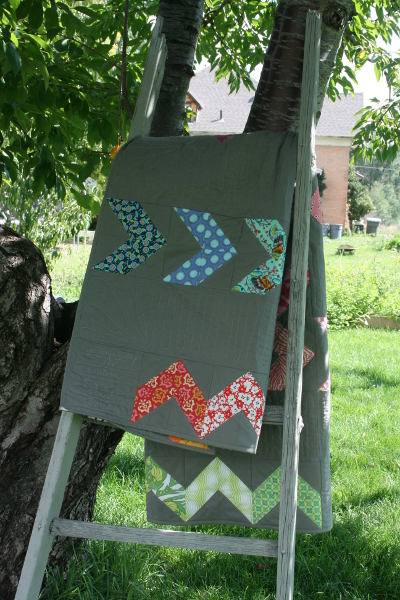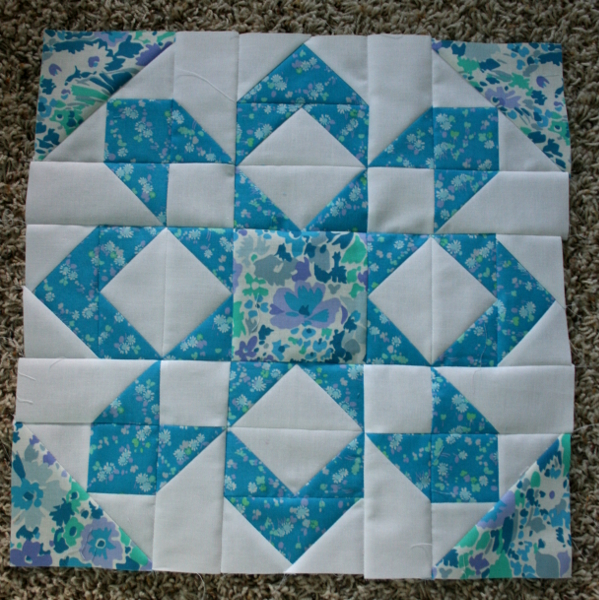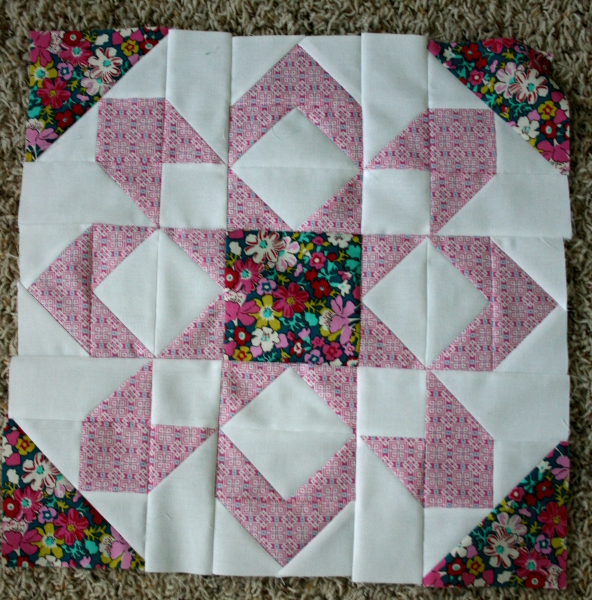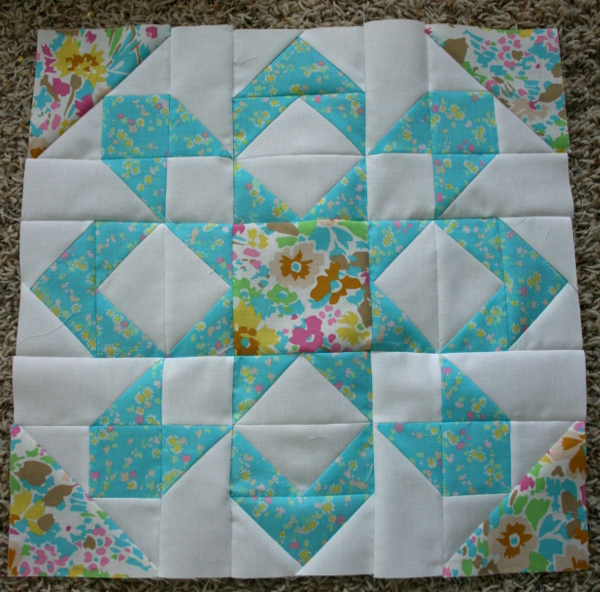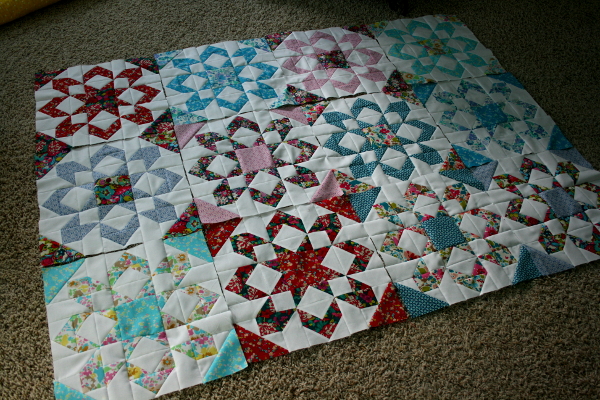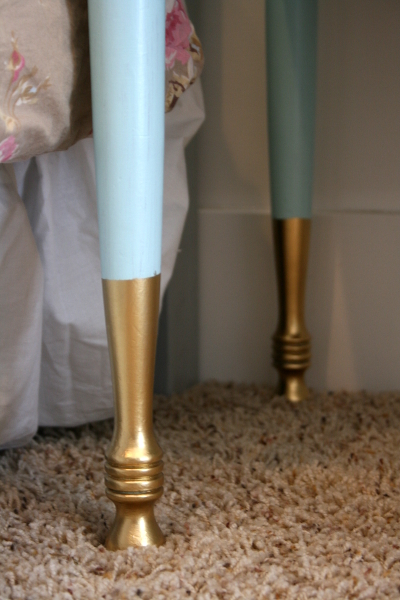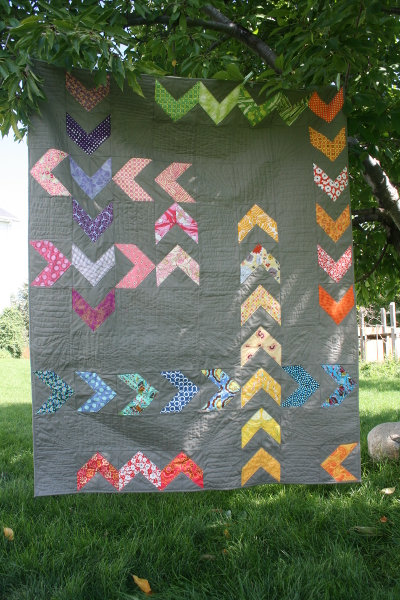
I designed and pieced this quilt top back in January and finished it in September, but am finally sharing pictures now. Made of half square triangles, I had in mind the movement of different dancers on a dance floor when I designed it. As I quilted it, however, it took on a slightly different meaning for me.
I decided to gift it to my sister as a birthday gift, and as I quilted it I ended up thinking a lot about her and the things I admire about her. One of the qualities that stand out is her willingness to boldly pursue dreams she has for herself and for her family, and as I thought about this, the movement of the quilt top became less a representation of pre-meditated movement in a dance and took on the road map of a life’s journey with intersections and turns and decisions. The color and prints in the quilt also seemed to fit her, as she has always been bold and confident in her use of and love for bright colors.
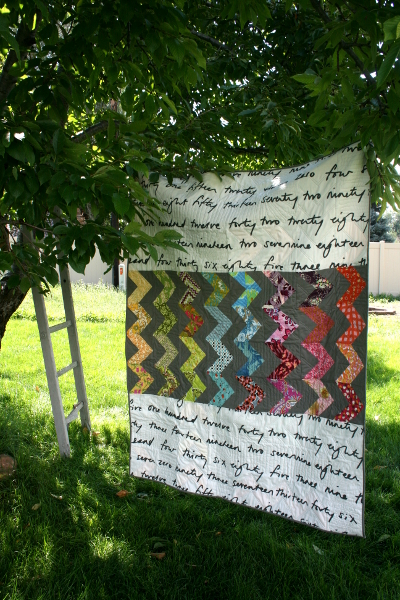
I really love the quilt back. It may be the closest I come to making a rainbow quilt, and I love the contrast of the arrows with the IKEA text print.
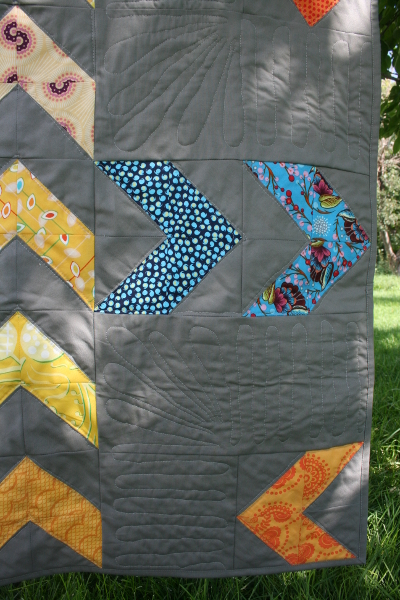
I quilted this before trying the flower quilting on my On a Whim quilt and my Early Bird quilt, so I guess this is my first real attempt at free motion quilting. I kind of wish I could do it over again because I felt like she deserved better than my first efforts amounted to, but then, that’s part of life’s journey too. I outlined the arrows and did a back and forth line in the negative space to help create more movement in the quilt. Overalll I’m happy with how I quilted it; I just wish I was better at it.
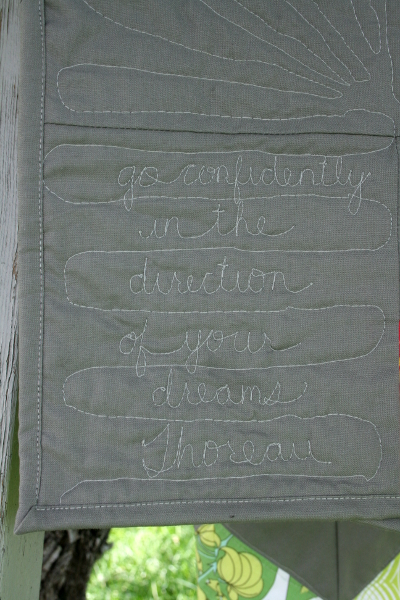
As I quilted, a quote from Thoreau kept coming to mind, “Go confidently in the direction of your dreams.” It seemed to fit perfectly what I was thinking and admiring in my sister, so I quilted it into the bottom corner square of the quilt. Not exceptionally executed, but it was fun to try and I hope will be meaningful to her. She has brought a big dream to life this year and I hope that this quilt will help her remember the victories she’s experienced, for they were won with a lot of hard work and persistence.
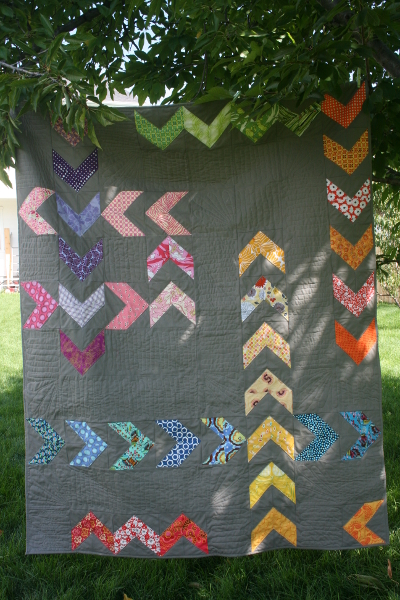
As for me, I’m happy to have this project completed and grateful that the completing of it ended up being a special experience for me because of the thoughts that accompanied it.
